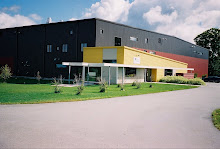Thirty days ago I began a new life as the Vermont Foodbank’s CEO. I walked into a high-functioning organization with a talented and motivated staff that is driven to achieve our mission - gathering and sharing quality food and nurturing partnerships that will end hunger - but always questioning and seeking to push boundaries. As I “blog for food” from time-to-time here I’ll be sharing my perspective on hunger, foodbanking, public policy and leadership. I hope you find it thought provoking.
Communities around the world are working on new ways to end hunger. At the Vermont Foodbank’s Hunger Conference last week our lunch speaker was Robert Egger of the D.C. Central Kitchen (www.dccentralkitchen.org), an innovator in culinary training programs for people in need. It is a model that has been widely emulated, including by the Vermont Foodbank/Chittenden Emergency Food Shelf partnership Community Kitchen in Burlington. Robert spoke about looking past the way we do things now (including the model he helped develop) and envisioning a paradigm that combines the millions of hands, feet, and minds of our retiring baby boomers, combined with the strength and energy of the millions of young people now in high school and college who grew up with public service as a scheduled part of their lives.
The current business model for the food banking industry is to collect food that would otherwise be wasted and distribute it to people who are hungry and don’t have the means or ability to get food on their own. Over the years, as manufacturers, distributors and retails donate their “waste” they are also waking up to the fact that this “waste” is affecting their bottom lines. The result is a decrease in the amount of waste, and a decrease in donated food. Foodbanks now need to buy more food to meet the increasing need, and therefore need to raise more money to buy food.
This is not a sustainable trend.
So how do we harness the minds and bodies of the millions out there to meet our mission while responding to change in the fundamentals of our business? The Vermont Foodbank is ramping up our gleaning program, called “Salvation Farms” and has bought the Kingsbury Farm where we will begin growing food for Foodbank distribution one season from now. Volunteers glean and process produce for Salvation Farms, and will have a big role in the operation of the Kingsbury Farm. These are two ideas—new ways, at least to food banking, of sourcing food—both just getting started.
I am interested in learning your thoughts.


No comments:
Post a Comment